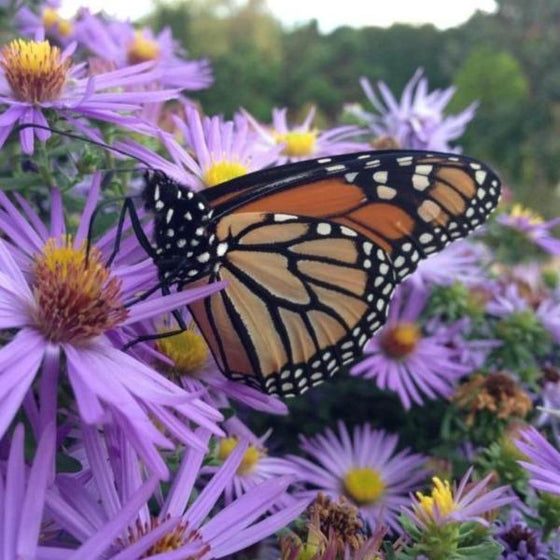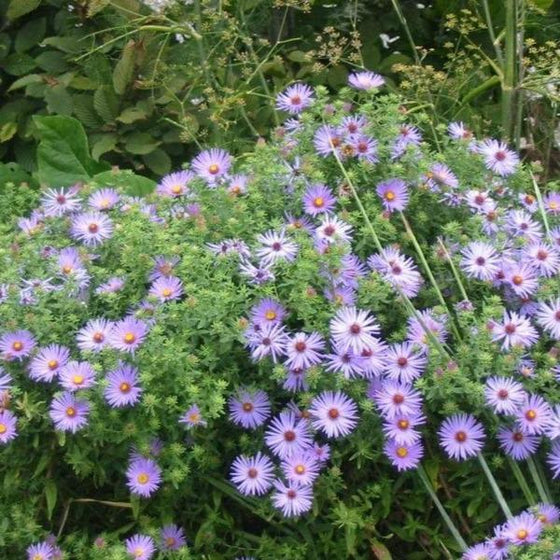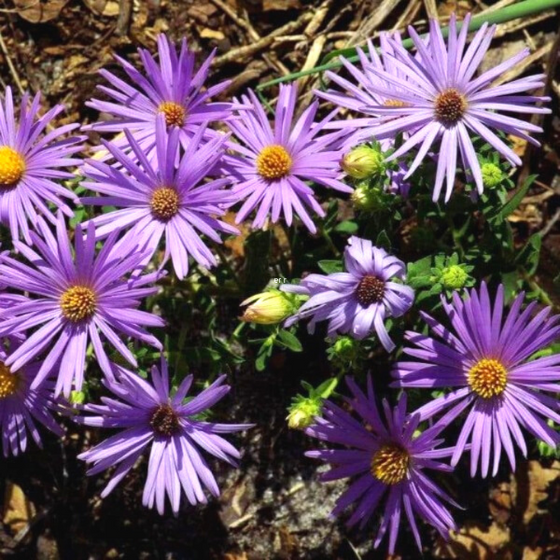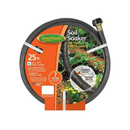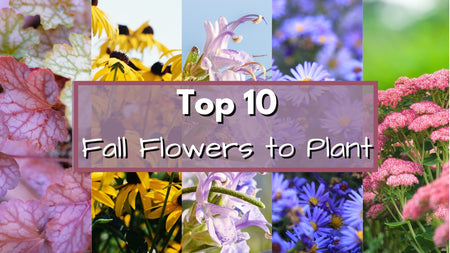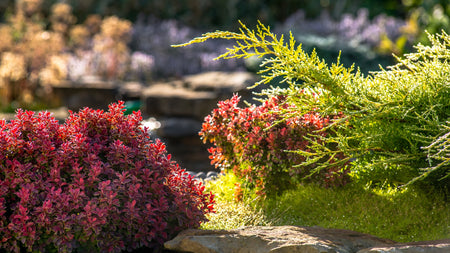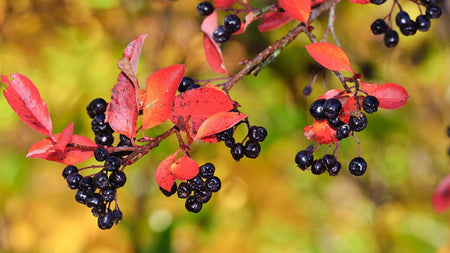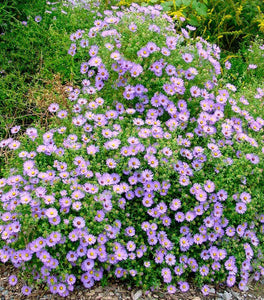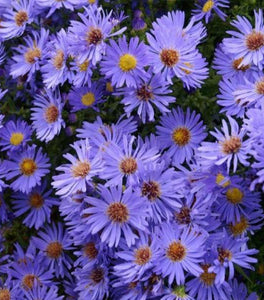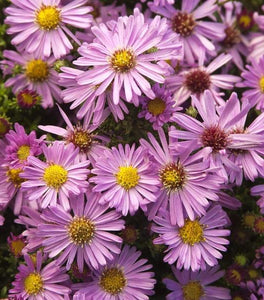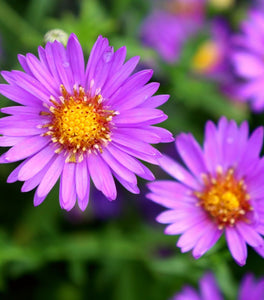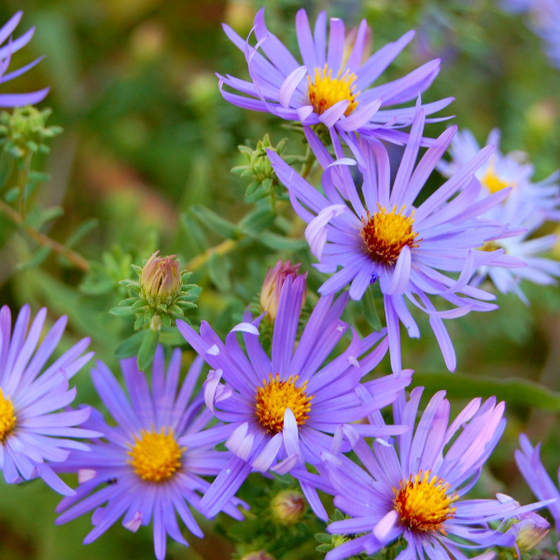
Images Depict Mature Plants
Aster ‘Raydon’s Favorite’ – Long-Blooming Native Fall Aster with Violet-Blue Flowers
A late-season superstar for pollinators and color.
Bring your garden to life in autumn with Aster ‘Raydon’s Favorite’, a native perennial renowned for its vibrant violet-blue, daisy-like flowers that bloom from September through frost. When most summer perennials fade, this reliable aromatic aster bursts into color, drawing bees, butterflies, and pollinators to your garden. It’s the perfect plant to extend your season of bloom and support wildlife in the process.
Compact, fragrant, and resilient.
This compact, mounding perennial forms a tidy shape, reaching 2 to 3 feet tall and wide, making it ideal for borders, meadows, or naturalized plantings. Its aromatic foliage releases a subtle herbal fragrance when brushed, while its dense, floriferous habit provides excellent structure in the late-season landscape. Whether mass-planted for a sea of color or tucked among ornamental grasses, ‘Raydon’s Favorite’ shines with effortless charm.
Low-maintenance and highly adaptable.
Aster ‘Raydon’s Favorite’ thrives in full sun to partial shade and tolerates a wide range of soil types, from average to dry. Once established, it becomes drought-tolerant and requires little beyond seasonal pruning. Its coarse texture makes it unappealing to deer and rabbits, and its nectar-rich flowers sustain bees and butterflies at a time when few other blooms remain.
A proven performer for sustainable gardens.
Recognized by the Mt. Cuba Center as one of the top-performing native asters for the Mid-Atlantic region, ‘Raydon’s Favorite’ is a reliable choice for pollinator gardens, native landscapes, and eco-conscious designs. Long-lived, hardy, and bursting with vibrant color, it’s one of the most rewarding perennials you can grow — a true fall garden essential.
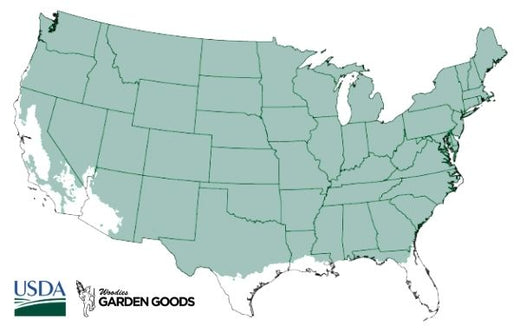
| Hardiness Zone: | 3-8 |
|---|---|
| Mature Height: | 2 to 3 Feet |
| Mature Width: | 2 to 3 Feet |
| Classification: | Perennial |
| Sunlight: | Full sun to light shade |
| Habit: | Upright, clump forming |
| Flower Color: | Lavender blue |
| Flowering Season: | Mid fall to late fall |
| Foliage: | Lavender-blue, sweetly scented |
| Soil Condition: | Prefers dry, average to slightly moist soil, will not tolerate wet soil in winter |
| Water Requirements: | Water well until established |
| Uses: | Extremely attractive when used as a focal point in the mixed border, mass planting. Attracts pollinators. |
How to Care for Aster Raydon's Favorite
Be sure to read our planting instructions to ensure a healthy and happy Aster Raydon's Favorite plant for years to come!
How should I plant Aster ‘Raydon’s Favorite’?
Aster ‘Raydon’s Favorite’ blooms from late summer through frost, offering a spectacular show of violet-blue, daisy-like flowers when most perennials have stopped flowering. It typically starts flowering in September and continues well into November, making it one of the last sources of color and nectar in the garden. This aromatic aster thrives in full sun and consistently reblooms for nearly eight weeks. Its long bloom time makes it a top pick for gardeners who want to extend seasonal color and support pollinators deep into fall. Pair it with ornamental grasses or goldenrod for a striking autumn display.
How should I water Aster ‘Raydon’s Favorite’?
Keep the soil evenly moist during the first growing season to encourage strong root growth. Once established, ‘Raydon’s Favorite’ becomes drought tolerant, thriving even in dry conditions. Avoid overwatering or letting the soil remain soggy, as this can lead to root rot. In periods of extreme heat or prolonged drought, give it a deep soak once a week to maintain healthy foliage and prolonged blooming. A layer of mulch can further help retain moisture and protect the roots through summer and winter.
How should I fertilize Aster ‘Raydon’s Favorite’?
Feed your Aster ‘Raydon’s Favorite’ once in early spring with a balanced, slow-release fertilizer or a layer of organic compost. This supports vigorous new growth and consistent flowering. Avoid excessive fertilization, as too much nitrogen can lead to floppy stems and fewer blooms. Because this plant is naturally hardy and adaptable, it performs beautifully in average garden soil without the need for frequent feeding. A little organic matter at planting and a spring refresh each year are all it needs to thrive.

How and when should I prune or cut back Aster ‘Raydon’s Favorite’?
In late spring or early summer, lightly pinch or shear back the plant by about one-third to encourage bushier growth and more blooms in fall. Deadhead spent flowers to keep the plant looking tidy and to extend the blooming period. After the first frost, you can cut back the stems to about 3 inches above the ground. Alternatively, leave the seed heads standing through winter to feed birds and provide seasonal texture. In early spring, remove old growth before new shoots appear.

